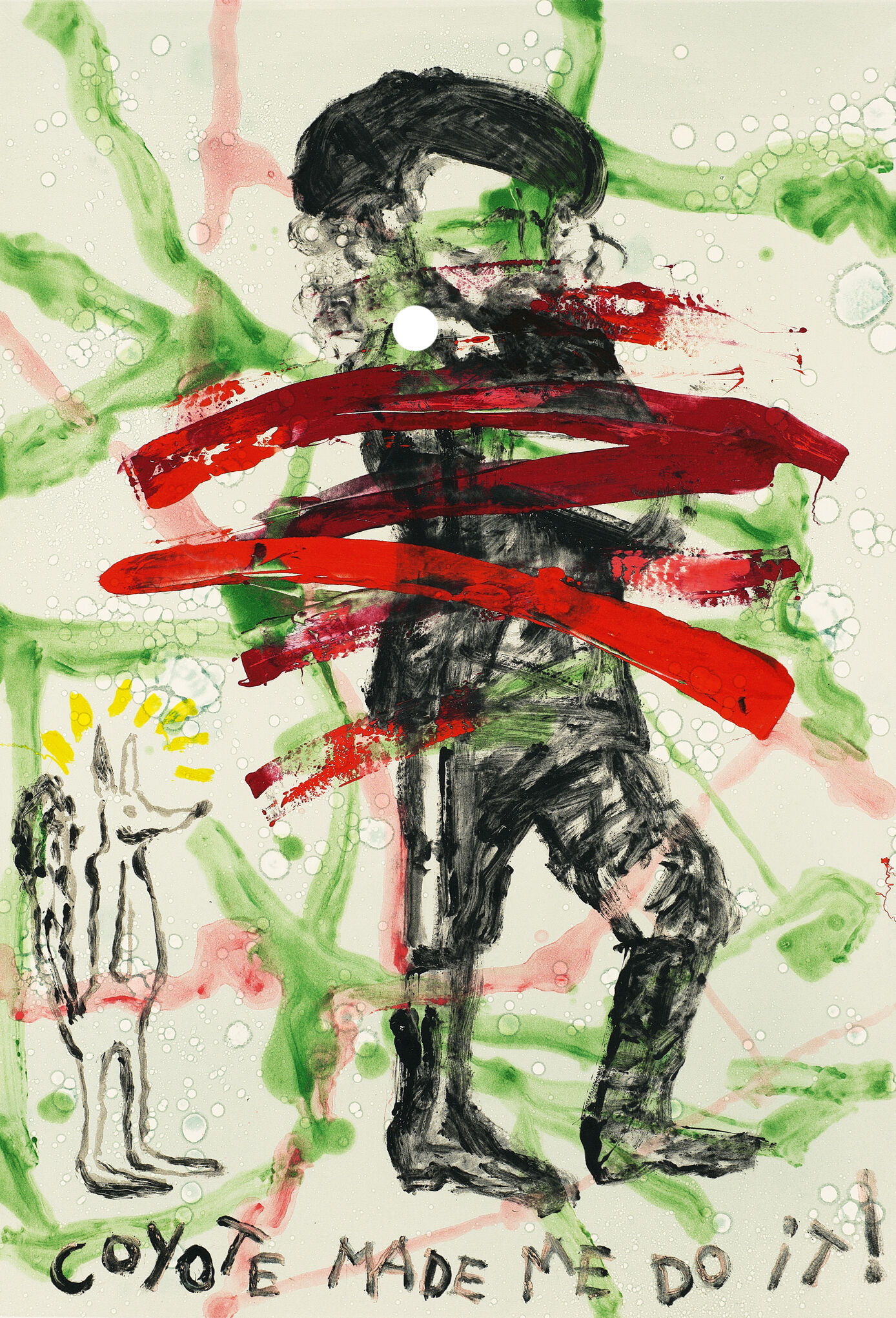Storied Characters
“I began thinking about what are the things my tribe might see most? . . . the canoe, the buffalo, the horse, and the coyote.”
–Jaune Quick-to-See Smith
Coyote is a principal character in many Kalispel, Spokane, and Salish mythology stories. In these often humorous accounts, well-meaning yet boastful Coyote acts for the good of humankind, but is also a trickster. In the monotype Coyote Made Me Do It!, Smith depicts a miniature coyote standing on its hind legs behind a larger erect figure, a blurred image of the uniformed cavalry commander George Armstrong Custer (1839-1876) who massacred Cheyenne, including many women and children. Red paint brushstrokes cross out Custer’s torso, alluding to the work’s title, Coyote’s role as trickster, the artist’s actions in creating art and, by extension, her activism. Pale green and red brushstrokes intersect the background. Smith explains, “Tricksterism can be part of making art, writing or doing theater. The creator, inventor, satirist must show the flip side of things. They turn things upside down in order to lampoon the immorality or insincerity of politicians, priests, or heads of governments or show the human condition.” She reflects, “I always try to walk that line between creating attractive or interesting work yet with strong social commentary and always with humor or maybe better words would be satire or irony.”
Activity
“. . . art would have nothing to say without caricature, ridicule, and parody. This is what makes great art last through the ages.”
–Jaune Quick-to-See Smith
How would you parody a contemporary issue or concern of significance to you? How would you create a satirical work of art?
Jaune Quick-to-See Smith draws upon the Native American traditional character of Coyote in her works to illustrate the role of tricksterism in folklore and her art. She also exposes how Native American mythological figures are often appropriated in popular culture, perhaps without the general public's knowledge. The artist clarifies, “Wile E. Coyote and Bugs Bunny are surely taken from our traditional Native American creation and teaching stories. They mock greediness, failures, shortcomings and narcissism—the foibles of human life. They hold up a mirror for we humans to see ourselves, in the flesh, warts and all.” And, as Smith indicates, “an artist can make an engaging painting that has depth of meaning but oh, some funny schtick too.”
Ask students to think about a contemporary story they would like to tell and what characters they would need to develop to communicate their narratives. As an added challenge, inspire them to make a parody or satirical work of art that presents their perspectives of the topical issue. Encourage them to use humor, irony, exaggeration, or ridicule to expose and criticize the subject matter of their choosing. Have them play up their characters' foolishness or vices, particularly through their dialogues and actions. Invite students to decide how they will communicate their narratives for example, through poetry, prose, a play, video, or other art form. Have students present their works and encourage them to devise a means of collecting the public’s responses to their pieces.

